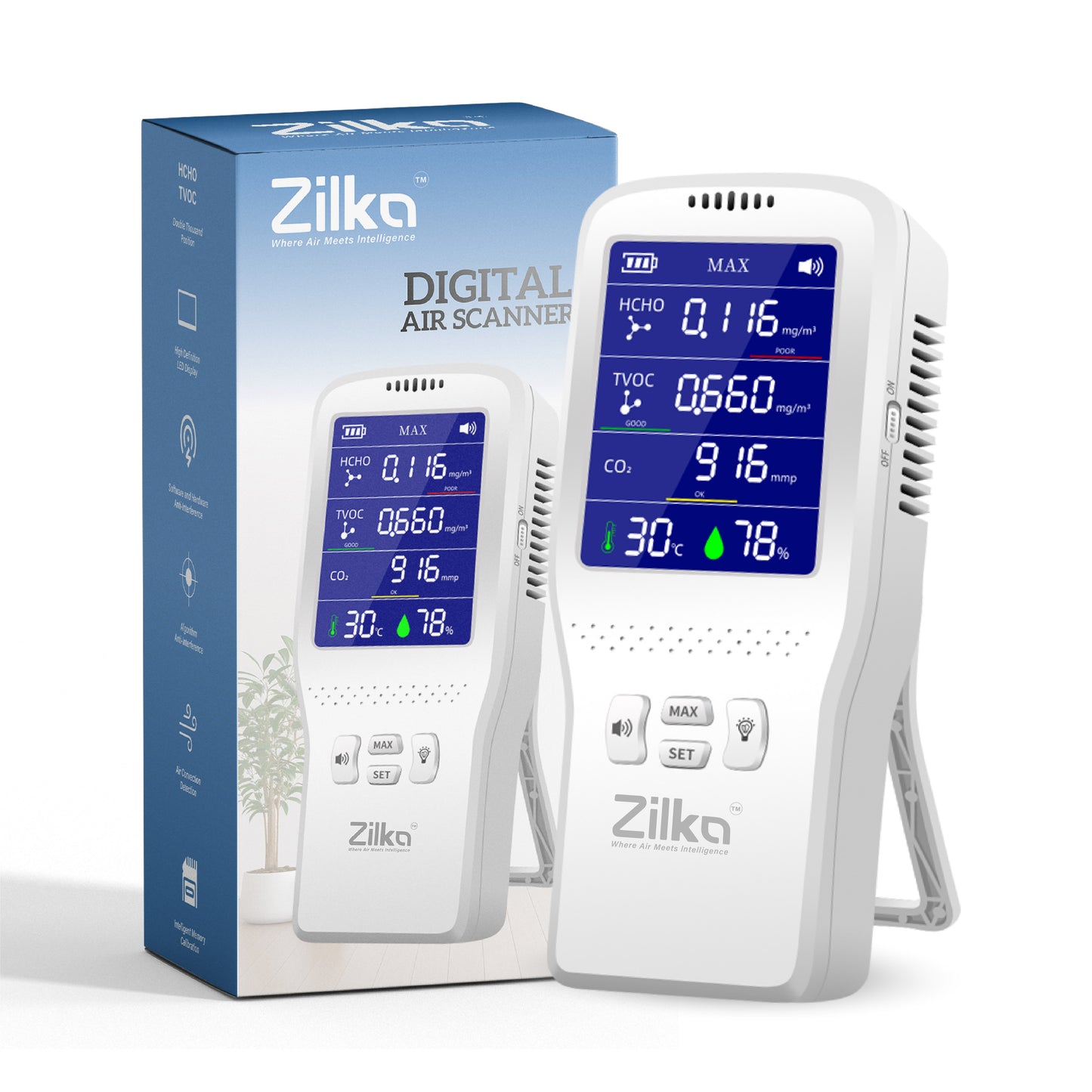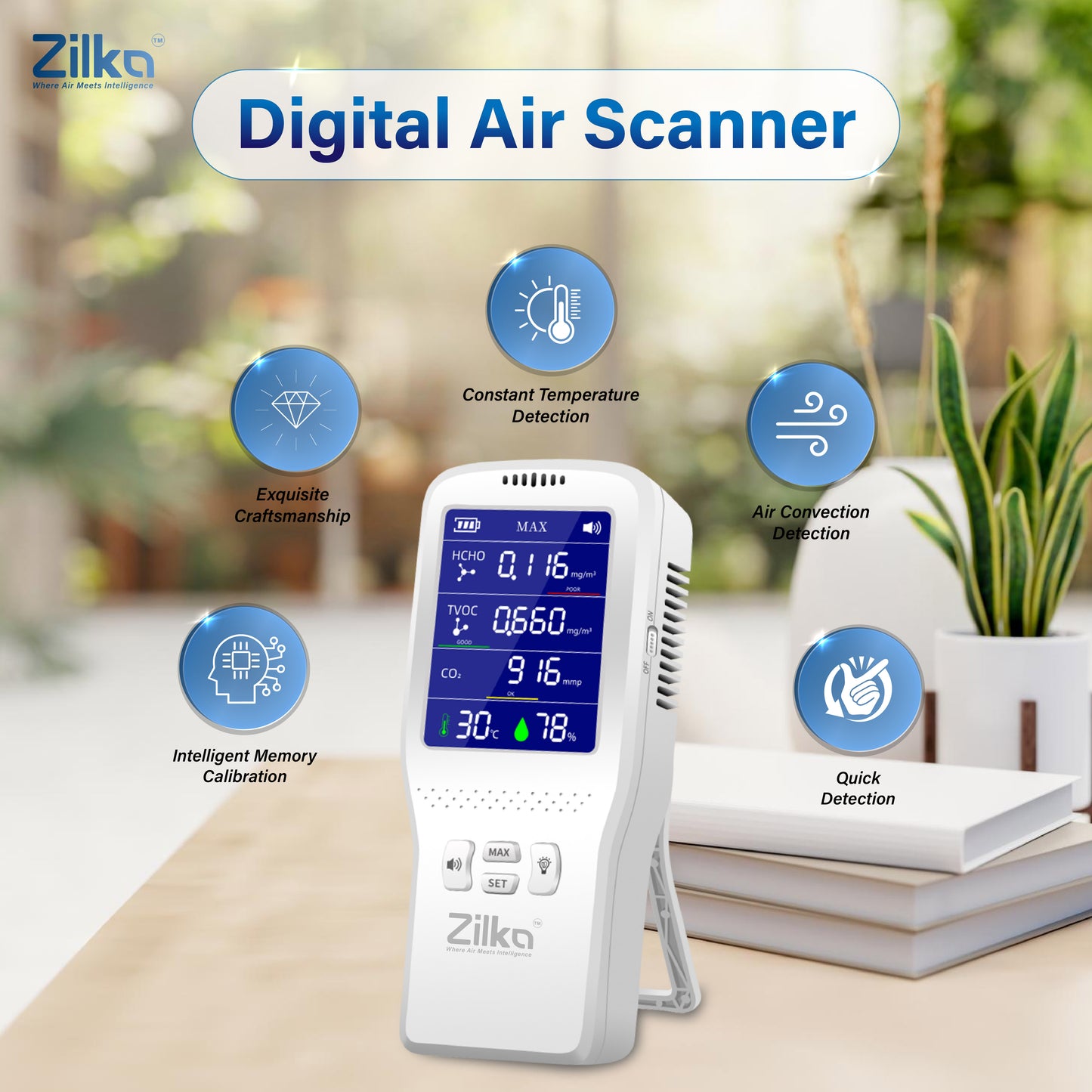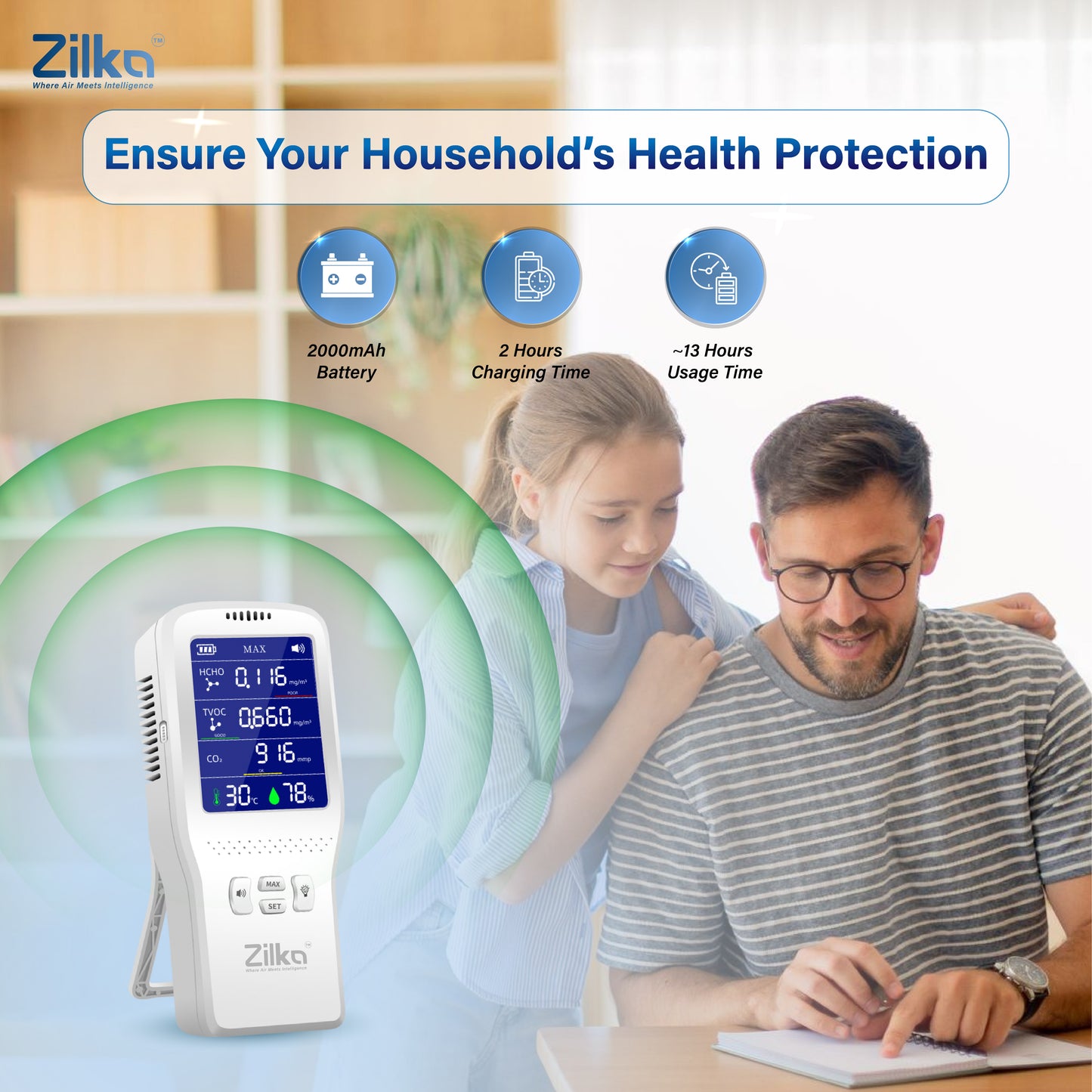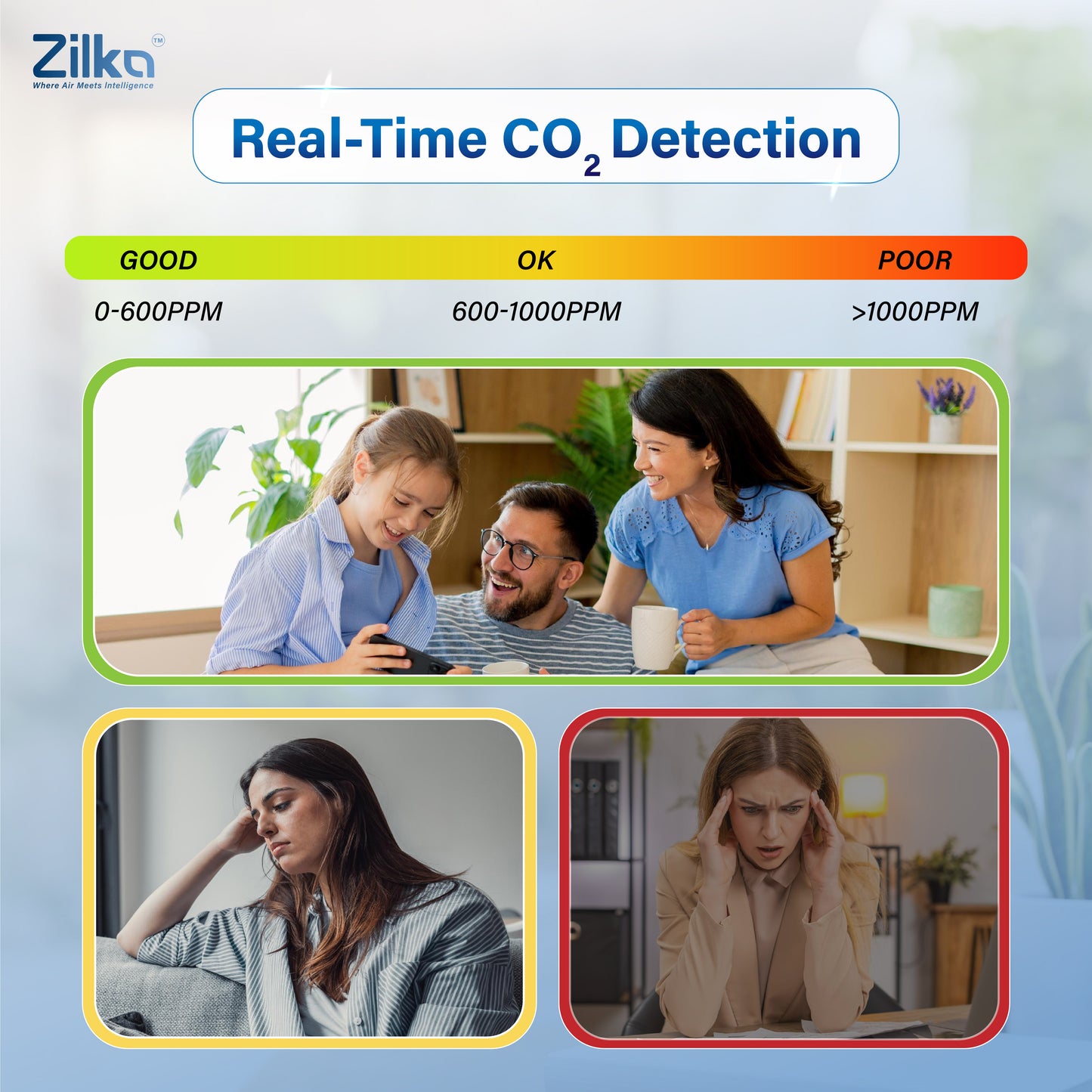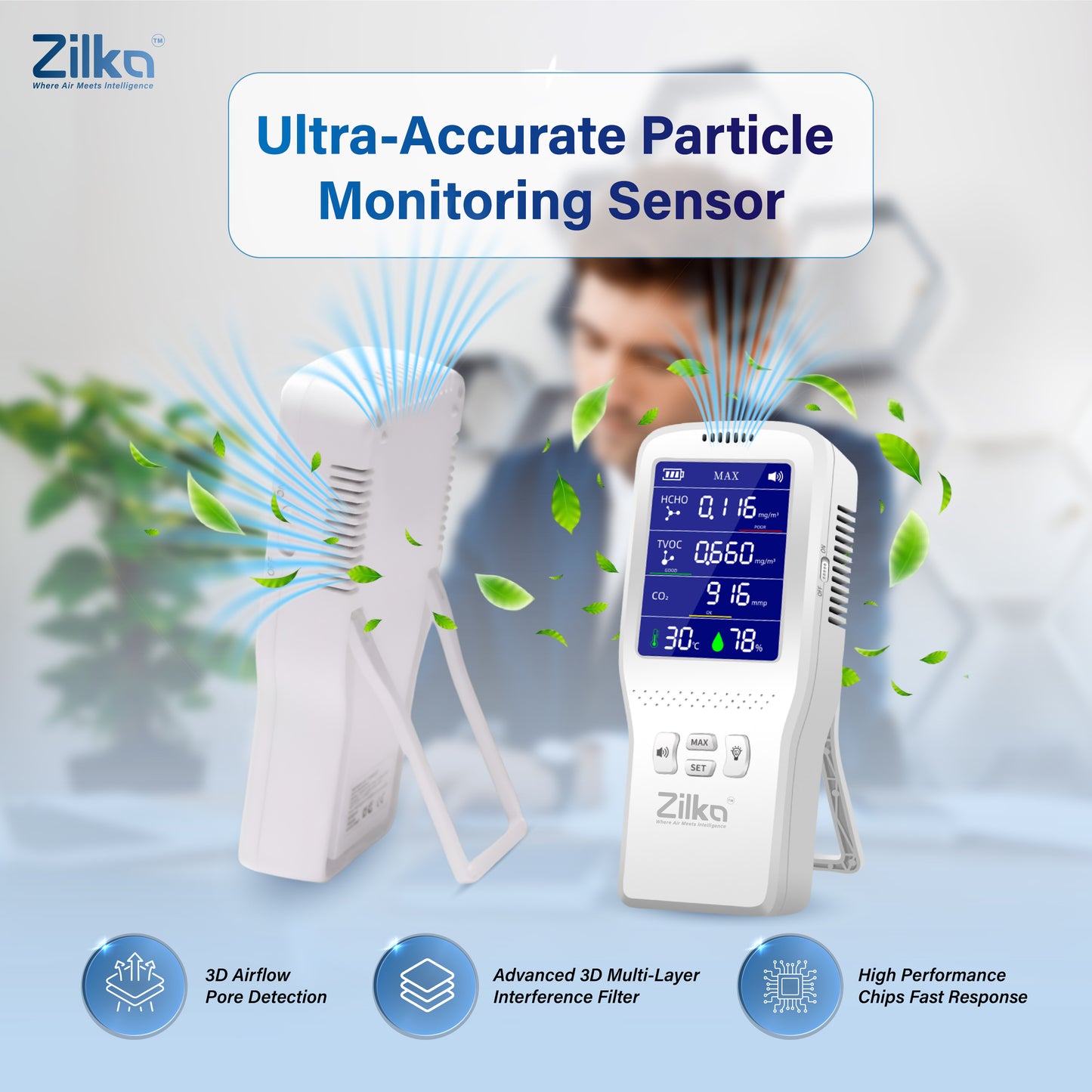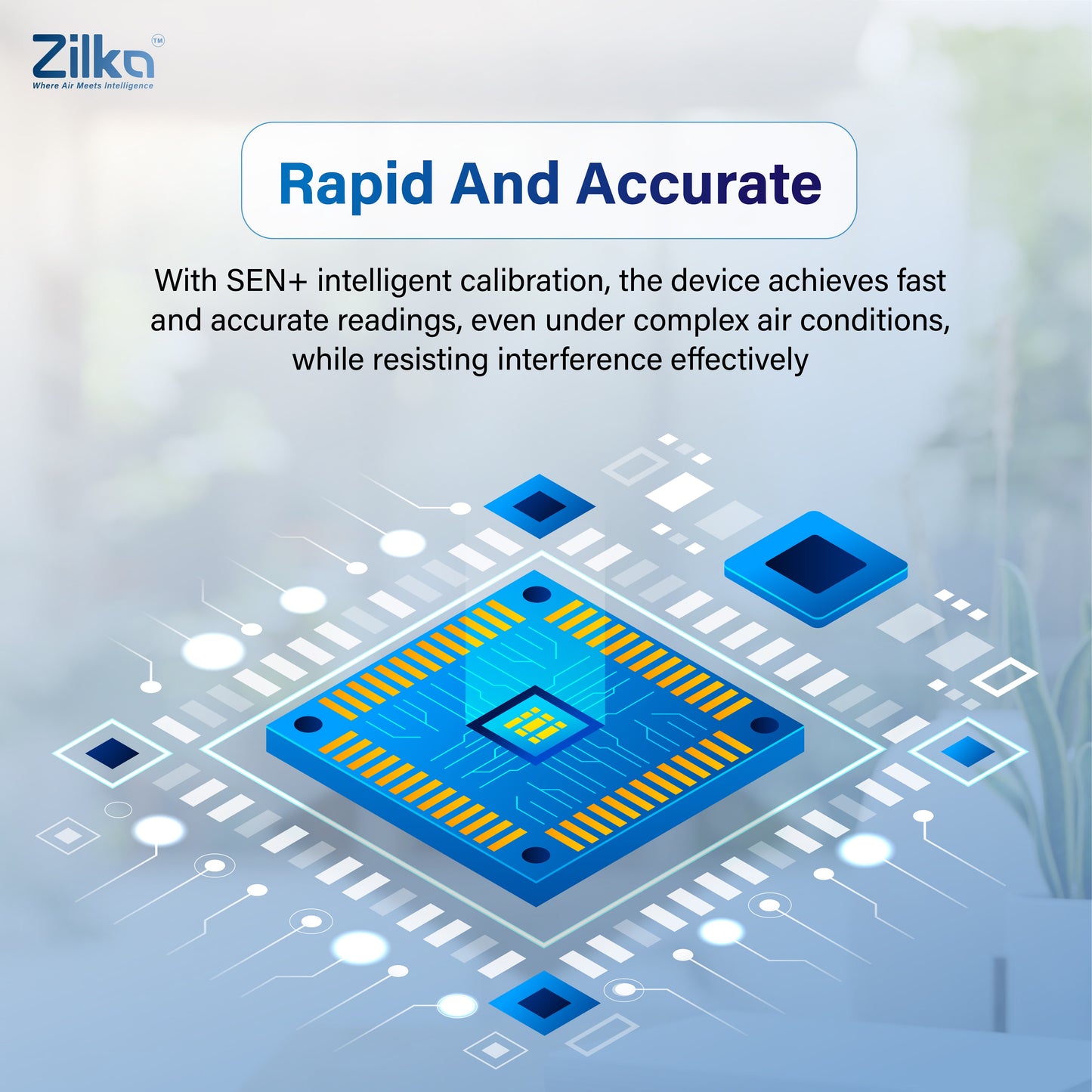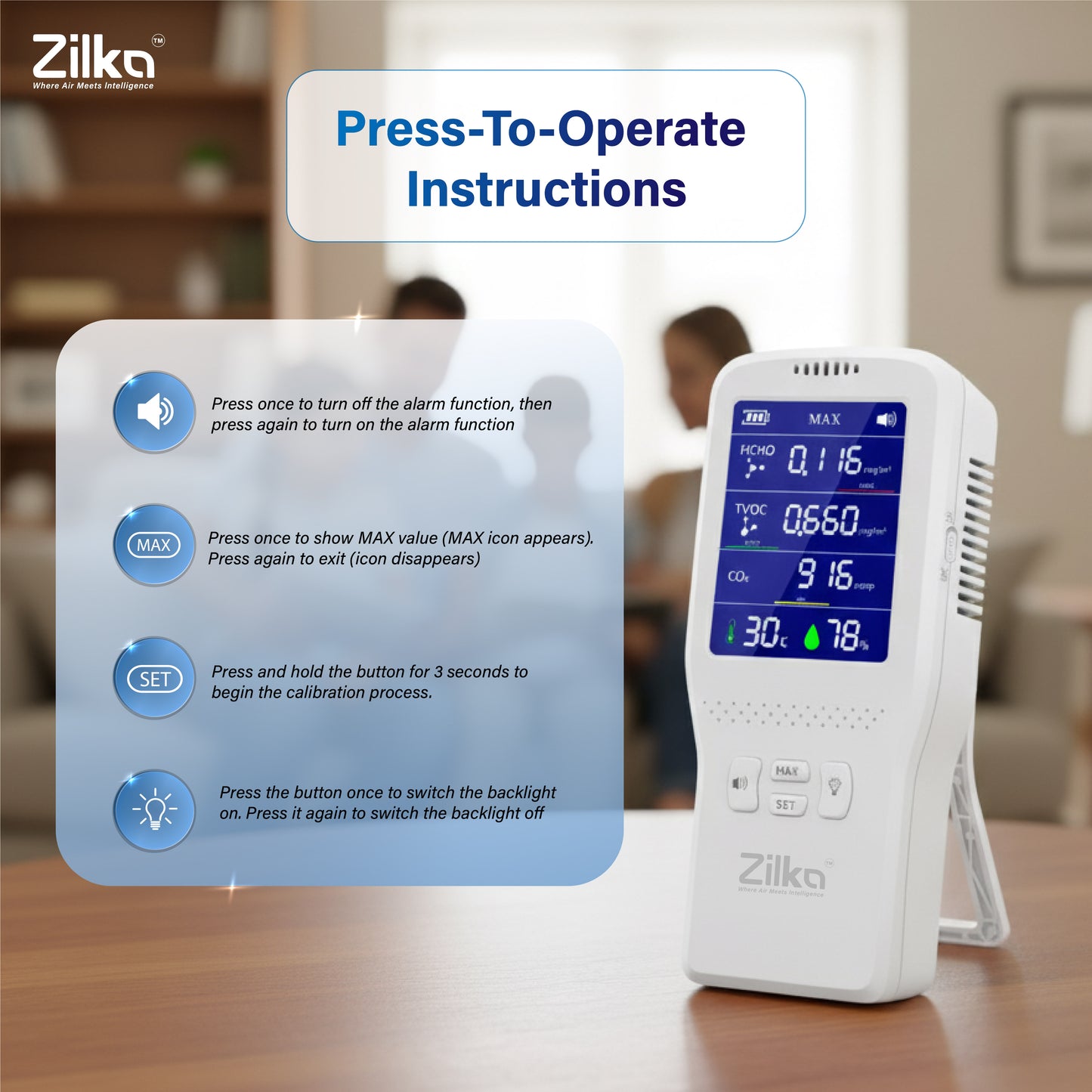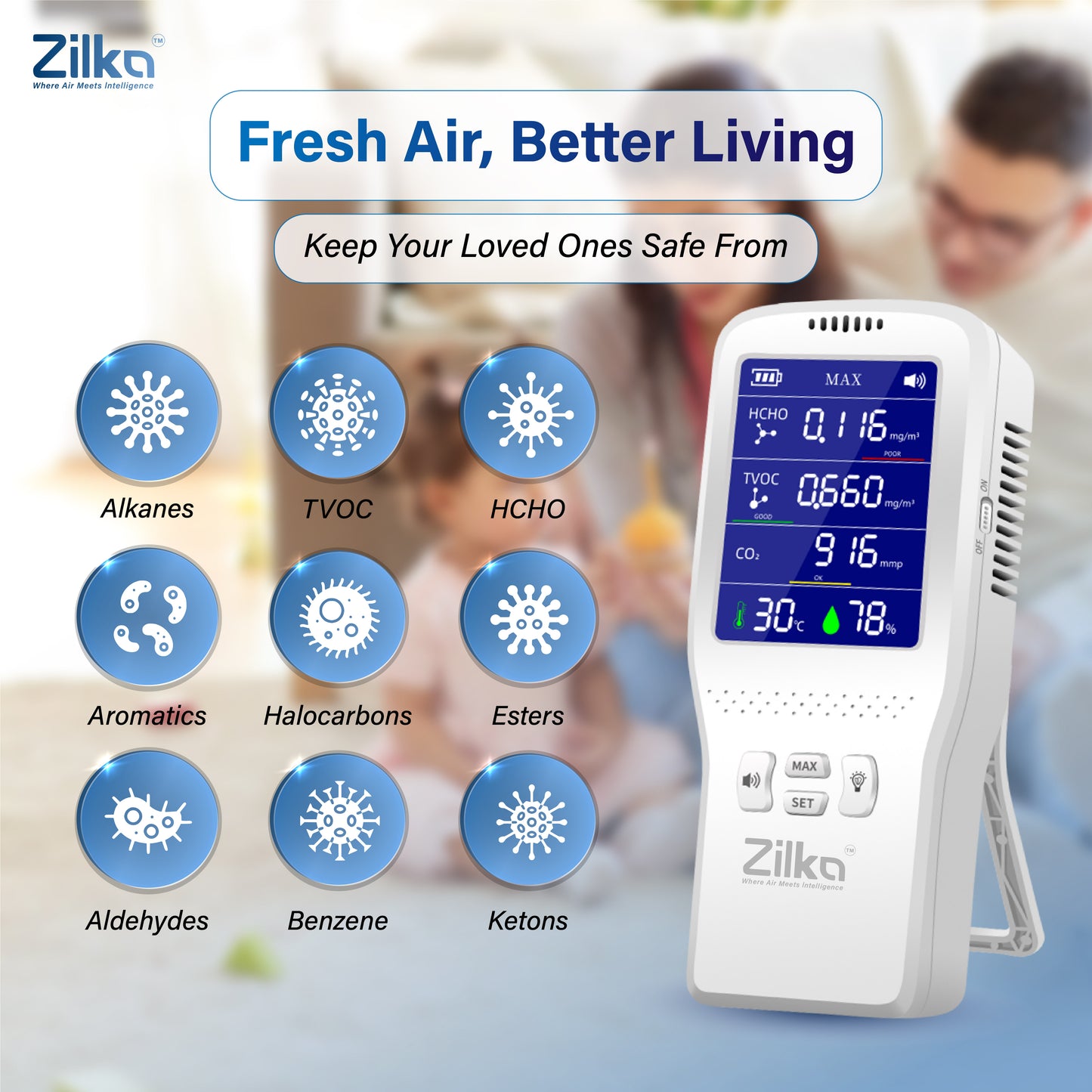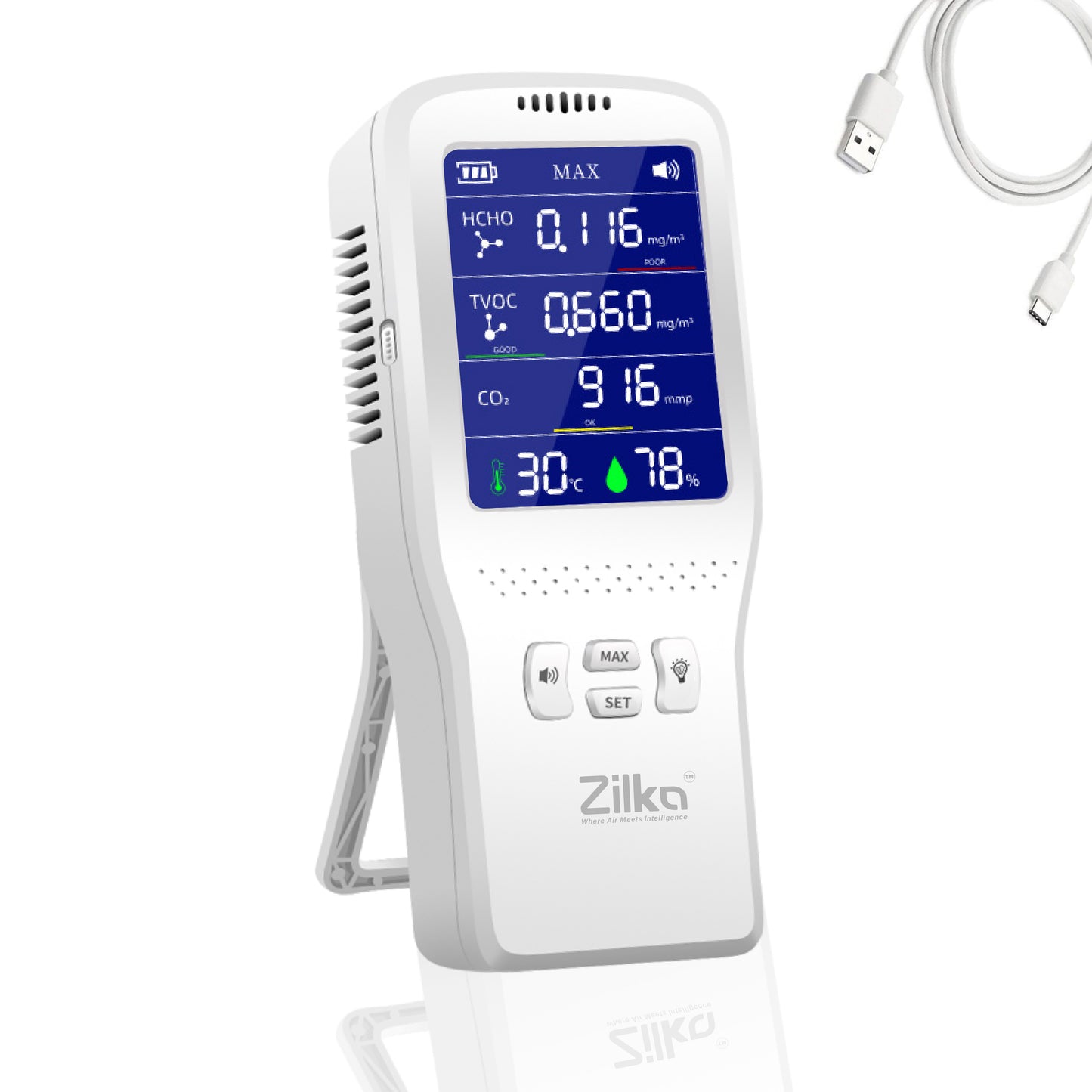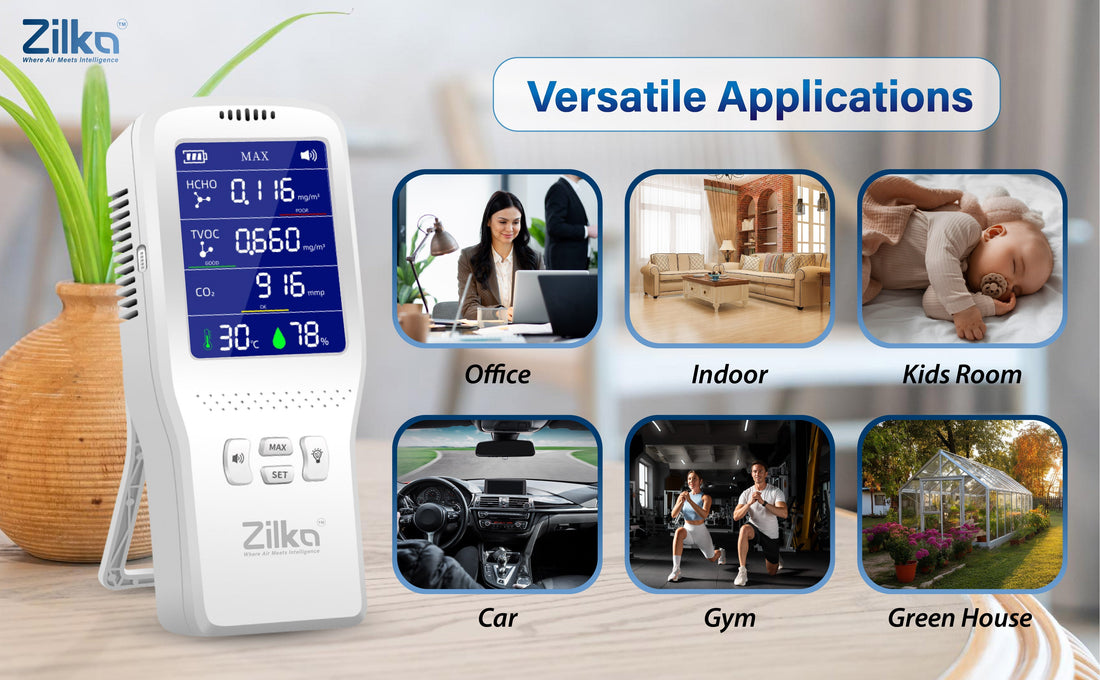
The Silent Threat: 5 Hidden Pollutants Your Zilka Air Quality Monitor Can Uncover in Your Home
Introduction: The Great Indoors and Its Invisible Compromise
We live in an era where the home has become more than just a home. It's our office, our gym, our movie theater, and our sanctuary from the outside world. We spend, on average, a staggering 90% of our lives indoors. We meticulously design these spaces for comfort and security, carefully choosing everything from the color of our walls to the softness of our carpets. Yet, in this pursuit of the perfect indoor haven, we've overlooked a fundamental, invisible element: the quality of the air we breathe.
The Environmental Protection Agency (EPA) has consistently reported a startling fact: the air inside our homes and buildings can be two to five times, and occasionally more than 100 times, more polluted than the outdoor air. This is the great paradox of modern living. The very walls we build to protect us can trap a cocktail of invisible chemical and particulate threats, creating a personal ecosystem that can silently undermine our health.
This isn't an issue of cleanliness. Your home can be spotless and still harbor these "silent threats"—odorless, colorless pollutants that don't announce their presence. The initial symptoms are often vague and easily dismissed: a persistent headache, unexplained fatigue, nagging allergies, or a tickle in the throat. We blame stress, lack of sleep, or seasonal changes, never suspecting our environment is the culprit.
But you cannot fight an enemy you cannot see.
This is where knowledge becomes power. The first step to reclaiming your home's air is to make the invisible, visible. The Zilka Intelligent Air Quality Monitor is engineered for this exact purpose. It’s not just another smart gadget; it is your personal air detective, equipped with precision sensors to identify the specific culprits compromising your well-being.
This definitive guide will walk you through the five most common and critical hidden pollutants that the Zilka monitor uncovers. We will delve into where they come from, how they affect your health, and most importantly, the actionable steps you can take—empowered by real-time data—to transform your home into the true sanctuary it was meant to be.
1. Formaldehyde (HCHO): The Stealthy Off-Gasser
Formaldehyde is a colorless gas with a pungent, pickle-like odor at high concentrations, but it's often undetectable by smell at the low, chronic levels typically found indoors. It is a cornerstone chemical of the modern manufacturing world, which is precisely why it’s so pervasive in our homes.
Where Does Formaldehyde Come From?
The primary sources of formaldehyde are resins used to bind wood fibers in pressed-wood products. Think about the furniture and structures in your home:
- Engineered Wood: Particleboard, plywood, and medium-density fiberboard (MDF) are the biggest offenders. These are used in everything from subflooring and cabinetry to bookshelves, desks, and "fast fashion" furniture. That "new furniture smell" is often a strong indicator of formaldehyde off-gassing.
-
Building Materials: Certain insulation materials, glues, adhesives, paints, varnishes, and sealants contain formaldehyde.
-
Household Products: It can be found in permanent-press fabrics (like curtains and some clothing to prevent wrinkles), paper product coatings, and even some cleaning agents.
-
Combustion: Tobacco smoke, burning wood in fireplaces, and emissions from unvented gas stoves can also release formaldehyde.
What are the Health Risks?
The International Agency for Research on Cancer (IARC) classifies formaldehyde as a known human carcinogen. The health effects are dose-dependent and can be broken down into two categories:
-
Short-Term Exposure: Watery eyes, burning sensations in the eyes, nose, and throat, coughing, wheezing, nausea, and skin irritation. It is a potent trigger for individuals with asthma.
-
Long-Term Exposure: Chronic exposure, even at low levels, is linked to an increased risk of certain rare cancers, including nasopharyngeal cancer.
How the Zilka Monitor Uncovers the Threat:
Your nose can become accustomed to smells, and many dangerous levels of HCHO are below the odor threshold. The Zilka Air Quality Monitor eliminates the guesswork. Its dedicated electrochemical HCHO sensor provides precise, real-time measurements in milligrams per cubic meter (mg/m³). You can place the monitor in a newly furnished nursery or near a new cabinet and see the exact level of off-gassing, allowing you to:
-
Identify the Source: Pinpoint exactly which items are polluting your air.
-
Verify Safety: Confirm whether that "low-VOC" or "eco-friendly" product is living up to its claims.
-
Track Mitigation: See tangible proof that your ventilation efforts are working as the HCHO numbers drop.
Actionable Solutions:
-
Ventilate Aggressively: When you bring new furniture home, open windows and use fans to circulate air and accelerate off-gassing.
-
Choose Wisely: Opt for solid wood furniture when possible. For engineered wood, look for products certified as CARB Phase 2 compliant or ULEF (ultra-low-emitting formaldehyde).
-
Control Climate: Formaldehyde off-gassing increases with higher temperatures and humidity. Use your A/C and keep humidity levels in check.
-
Purify Your Air: Standard air purifiers with only HEPA filters do not remove formaldehyde. You need a purifier with a substantial activated carbon filter, which is designed to adsorb gas molecules. Using your Zilka monitor, you can confirm the purifier's effectiveness.
2. Total Volatile Organic Compounds (TVOCs): The Chemical Cocktail
Volatile Organic Compounds (VOCs) are a large group of chemicals that easily turn into gas at room temperature. "Total" VOCs (TVOC) is a measurement of the combined concentration of hundreds of different VOCs that could be present in your air at any given time, creating a complex "chemical cocktail."
Where Do TVOCs Come From?
VOCs are everywhere, released from a vast array of common products:
-
Cleaning & Disinfecting: Aerosol sprays, chlorine bleach, detergents, furniture polish, and glass cleaners are major sources.
-
Personal Care Products: Perfumes, hairsprays, deodorants, nail polish, and air fresheners (which often mask odors by releasing more VOCs).
-
Home Improvement: Paints, strippers, wood preservatives, glues, and caulks.
-
Hobbies & Crafts: Markers, adhesives, and solvents.
-
Furnishings: New carpets, vinyl flooring, and upholstery can off-gas VOCs for months or even years.
-
Office Equipment: Printers and copiers can emit certain VOCs during operation.
What are the Health Risks?
The health effects of VOCs can vary widely depending on the specific chemicals and concentration levels. Some are highly toxic, while others have no known health effects. The combined, or "cocktail," effect is a primary concern.
-
Short-Term Exposure: Headaches, dizziness, loss of coordination, nausea, fatigue, and irritation of the eyes, nose, and throat. These symptoms are often associated with "Sick Building Syndrome."
-
Long-Term Exposure: Chronic exposure to certain VOCs (like benzene, found in gasoline and tobacco smoke) can cause damage to the liver, kidneys, and central nervous system, and is linked to an increased risk of cancer.
How the Zilka Monitor Uncovers the Threat:
It is impossible to identify the source of a headache or dizzy spell without data. The Zilka monitor's TVOC sensor acts as your frontline defense, detecting the total chemical load in your air. The clear, color-coded display instantly tells you if the air quality is "GOOD" or "POOR." This allows you to:
-
Conduct Real-Time Experiments: See the TVOC level skyrocket the moment you spray a disinfectant. This immediate feedback creates powerful behavioral change.
-
Pinpoint Problem Areas: Move the monitor from the bathroom to the garage to the newly painted hallway to identify hotspots.
-
Vet New Products: Test a new "eco-friendly" cleaner on a small area and see what the Zilka monitor says before you use it all over your home.
Actionable Solutions:
-
Source Control is Key: The best defense is a good offense. Reduce the number of VOC-releasing products you bring into your home.
-
Switch to Low-VOC: Choose low- or no-VOC paints and building materials. Opt for natural cleaning solutions like vinegar, baking soda, and water.
-
Store Chemicals Safely: Keep containers of paint, solvents, and gasoline tightly sealed and, if possible, stored in a detached shed or garage.
-
Ventilate During Use: When you must use a strong chemical product, open all windows and use fans to direct fumes outside.
-
Invest in a High-Performance Air Purifier: For comprehensive protection, an air purifier with a robust activated carbon filter is essential to capture the wide range of gaseous VOCs that HEPA filters miss.
3. Carbon Dioxide (CO_2): The Indicator of Stale, Suffocating Air
Carbon Dioxide is a natural and harmless gas at normal concentrations. We exhale it with every breath. However, inside our modern, tightly sealed homes, CO_2 acts as a crucial indicator—a canary in the coal mine for poor ventilation. When CO_2 levels rise, it means your home isn't "breathing."
Where Does CO_2 Come From?
The primary source is simple: people and pets breathing. The more occupants in a sealed room, the faster the CO_2 levels will climb. Other minor sources include unvented combustion appliances like gas stoves and fireplaces.
What are the Health Risks?
At the concentrations found indoors, CO_2 is not acutely toxic like carbon monoxide. However, elevated levels are directly linked to a decline in well-being and cognitive function.
-
Levels above 1,000 ppm (parts per million): Can lead to drowsiness, complaints of stuffiness, and a noticeable decline in concentration, decision-making, and productivity.
-
Levels above 2,000 ppm: Can cause headaches, increased heart rate, and significant cognitive impairment. Waking up feeling groggy and unrefreshed is a classic symptom of high overnight CO_2 levels in a sealed bedroom.
Crucially, high CO_2 is a proxy for other pollutants. If you're not getting enough fresh air to dilute the CO_2 you exhale, you're also not diluting the VOCs, viruses, bacteria, and allergens that are building up in the same stale air.
How the Zilka Monitor Uncovers the Threat:
You can't feel the concentration of CO_2, but you can definitely feel its effects. The Zilka monitor gives you the hard data. Its precision CO_2 sensor provides a clear PPM reading, transforming a vague feeling of "stuffiness" into an actionable number. This allows you to:
-
Optimize Your Workspace: See how quickly CO_2 builds up in your home office during a long meeting and know exactly when to open a window to restore focus.
-
Improve Sleep Quality: Monitor your bedroom's overnight CO_2 levels. You might be shocked to see them climb to over 2,500 ppm, and you can take steps (like cracking a door or window) to improve your sleep.
-
Act as a "Ventilation Coach": The monitor teaches you the rhythm of your home's air, showing you how different activities and occupancy levels impact ventilation needs.
Actionable Solutions:
-
Ventilate, Ventilate, Ventilate: The solution is simple: introduce fresh air. Open windows on opposite sides of the house for 10-15 minutes, a few times a day, to create cross-ventilation.
-
Use Exhaust Fans: Run your kitchen exhaust fan when cooking and your bathroom fan during and after showers. These pull stale, polluted air out of your home.
-
Consider Mechanical Ventilation: For modern, energy-efficient homes that are tightly sealed, a Heat Recovery Ventilator (HRV) or Energy Recovery Ventilator (ERV) is the ultimate solution. These systems provide a continuous supply of fresh, filtered air while minimizing heat loss, ensuring excellent air quality 24/7.
4 & 5. Temperature and Humidity: The Environmental Enablers
While not pollutants in their own right, temperature and humidity are the master enablers. They are environmental catalysts that can dramatically worsen the impact of other pollutants and create entirely new problems of their own. Maintaining them within the optimal range is the foundation of good indoor air quality.
How They Worsen Air Quality:
-
High Humidity (>60%): This is a welcome mat for biological pollutants.
-
Mold & Mildew: Thrives in damp conditions, releasing allergenic spores and mycotoxins (which are VOCs) into the air.
-
Dust Mites: These microscopic pests, a major source of allergens, reproduce rapidly in high-humidity environments.
-
-
Low Humidity (<40%):
-
Airborne Virus Transmission: Studies show that many viruses, including influenza, can survive and travel more effectively in dry air.
-
Respiratory Discomfort: Dry air irritates nasal passages and the throat, making you more susceptible to respiratory infections.
-
-
High Temperatures:
-
Accelerated Off-Gassing: Heat acts as an accelerator, significantly increasing the rate at which formaldehyde and VOCs are released from furniture, building materials, and plastics.
-
How the Zilka Monitor Uncovers the Threat:
The Zilka monitor’s integrated temperature and humidity sensors provide the constant, reliable data you need to manage your indoor climate proactively. You don't have to wait for a musty smell or a static shock to know there's a problem. This allows you to:
-
Prevent Mold Growth: By keeping an eye on humidity, especially in basements and bathrooms, you can take action before mold has a chance to grow.
-
Optimize Comfort and Health: Maintain the ideal humidity range of 40-60% for respiratory health and comfort.
-
Control Off-Gassing: Correlate high-temperature days with spikes in your TVOC or HCHO readings, reinforcing the need for ventilation.
Actionable Solutions:
-
High Humidity -> Use Dehumidifiers: A dehumidifier is a non-negotiable tool for basements, crawl spaces, or any area that consistently reads above 60% humidity on your Zilka monitor.
-
Low Humidity -> Use Humidifiers: During dry winter months, a humidifier can add necessary moisture to the air, improving comfort and reducing the risk of respiratory irritation.
-
Ensure Proper Ventilation: Use exhaust fans to vent moisture from showers and cooking directly outside.
-
Maintain Your HVAC: Regularly service your air conditioning system, which plays a major role in dehumidifying your home.
Conclusion: From Invisible Threat to Empowered Action
Your home is your sanctuary, but it is also a complex, dynamic environment. The five silent threats—Formaldehyde, TVOCs, Carbon Dioxide, and imbalanced Temperature and Humidity—are not just abstract concepts; they are measurable realities that directly influence your family's health, comfort, and cognitive performance.
For too long, we have been blind to these realities. We've accepted fatigue, headaches, and allergies as an unavoidable part of life. But you no longer have to guess.
The Zilka Intelligent Air Quality Monitor bridges the gap between uncertainty and action. It doesn't just show you numbers; it tells you a story about your home. It reveals the impact of cooking a meal, of a newly furnished room, of a sealed bedroom overnight. It provides the indisputable data you need to make informed decisions, whether that’s opening a window, investing in an air purifier, or choosing safer products.
Investing in a Zilka monitor is not an expense; it's an investment in your family's well-being. It's the decision to replace passive worry with proactive control. It's the commitment to making your home not just look clean, but to be a truly healthy environment where your family can thrive.
Stop guessing what's in your air. It's time to see the truth and breathe the difference.


